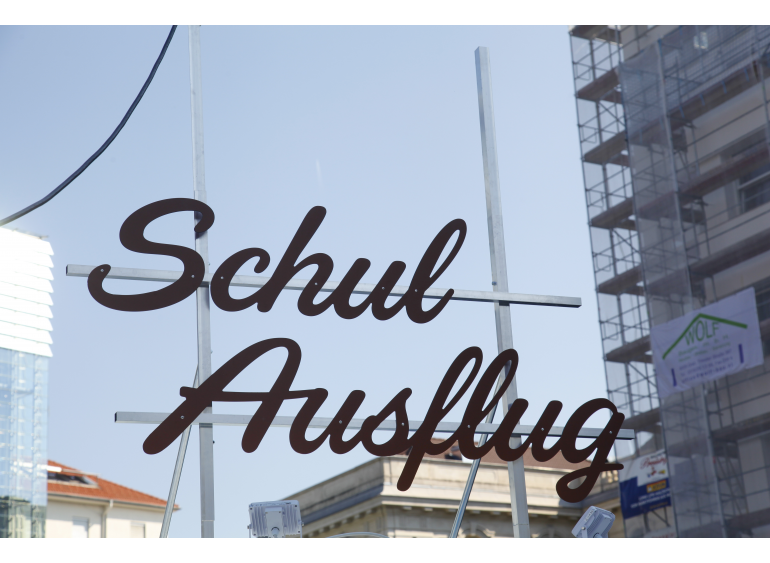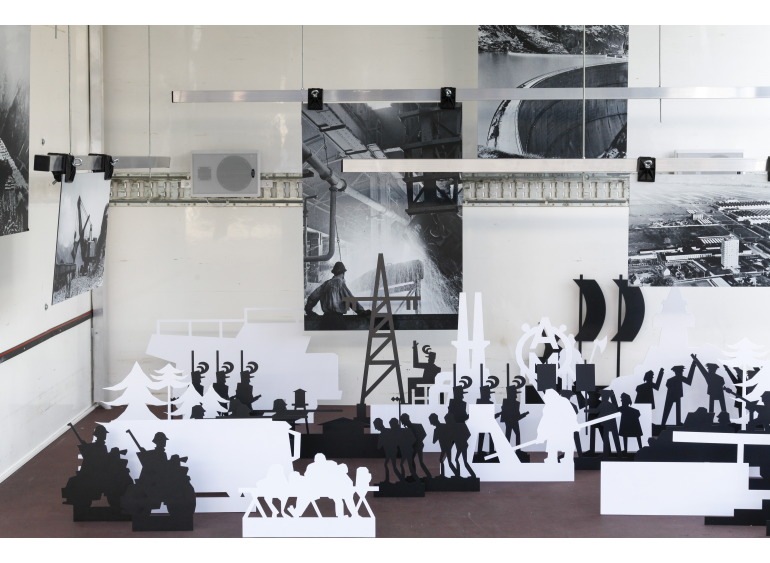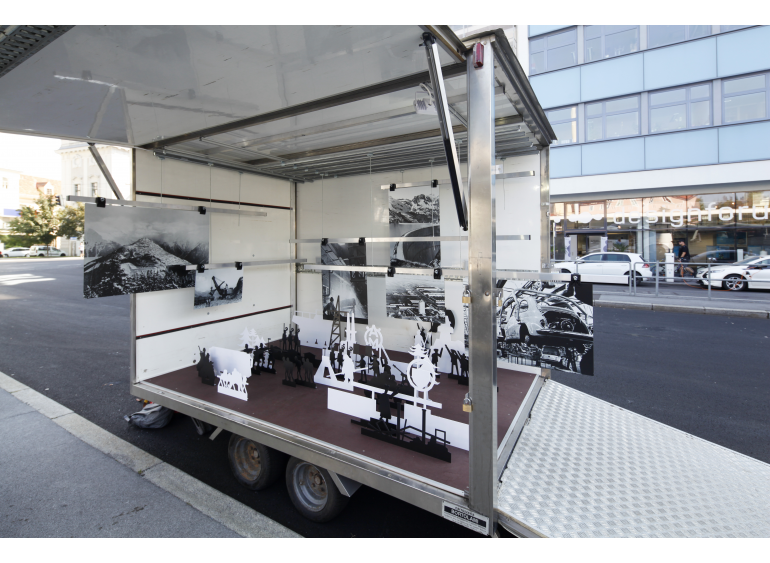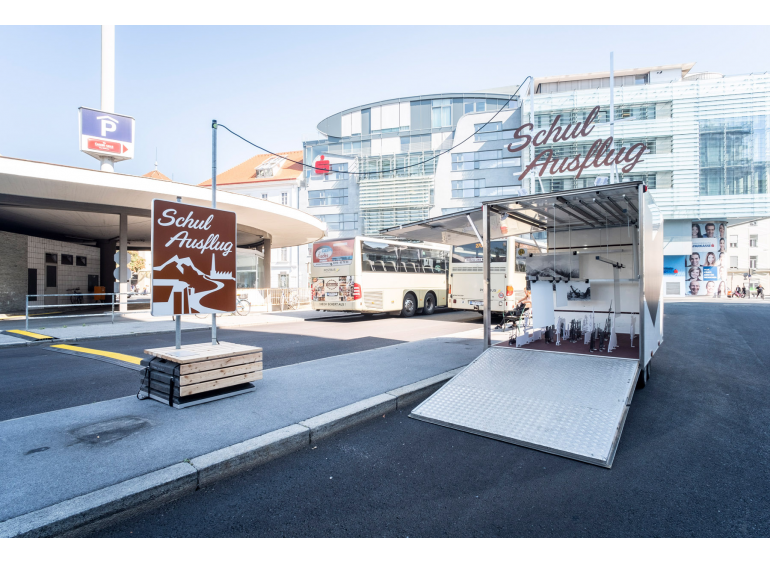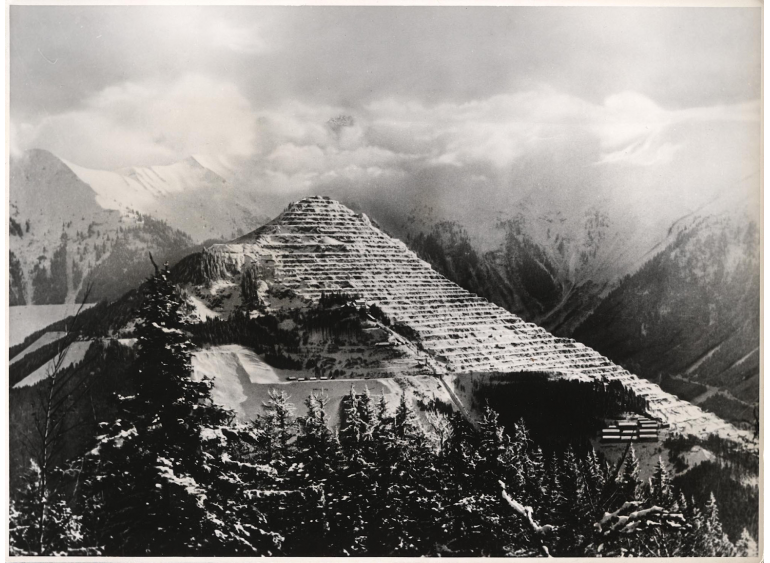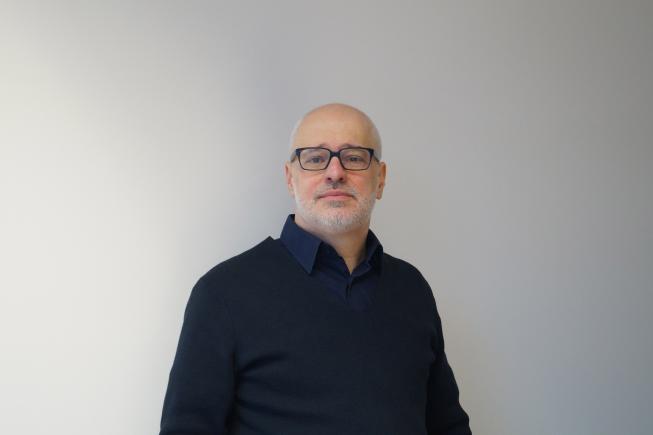School trips are a gentle form of indoctrination. Packaged with a sense of adventure and a whiff of freedom, these typical chaperoned visits to natural landmarks, monuments of industry, and historical sites both construct and perpetuate local, regional, and national identities, rarely delving too deeply into history’s darker side. This is as true in Graz as anywhere else, as artists and architects Michael Zinganel and Michael Hieslmair show in their contribution to steirischer herbst. An adapted trailer parked at Graz’s Central Bus Station becomes a vehicle and a metaphor for the ideological baggage of a typical school outing in Graz. It contains a research installation in the form of an extendable hanging system that presents a critical cartography of a trip to the Erzberg, Central Europe’s largest open-pit mine, famous for its distinctive terraces and its daily demonstrations of mining operations. Along the way Zinganel and Hieslmair continually make stops: From the Erzberg via the steel works in Donowitz to the former Styre-Puch automobile factory in the south of Graz, they give a tour of the monuments of the country’s modernization, usually presented as iconic of the small, gregarious, innocent Austrian Republic’s post-war reconstruction. Yet in fact, Styria’s industries all saw their greatest period of expansion under Austrofascism and National Socialism, with the massive exploitation of slave labor, serving almost exclusively military purposes. Zinganel and Hieslmair’s research installation explores this dark history with the help of an arrangement of visual and audio materials and thus challenges the traditional idyllic representation of the difference between city and countryside, revealing relations of dependency, from energy production to mining, steel production, machine building and back.
Volksfronten
Michael Zinganel & Michael Hieslmair
School Trip (2018)
Installation
21.9.–14.10.
Andreas-Hofer-Platz
8010 Graz
Google Maps
Free access
Commissioned and produced by steirischer herbst
With the kind support of ÖBB-Postbus GmbH
Collaboration Research/Production: Robin Klengel, Adina Camhy
Michael Zinganel (1960, Bad Radkersburg, Austria) is an architectural theorist, cultural historian, curator, and artist. His exhibitions and writings look at city designs and various forms of mobility to deconstruct mythologies of planning in contrast to “everyday experience” and its underlying productive forces. He lives in Vienna.
Michael Hieslmair (1974, Linz) is an artist and architect who has been collaborating on projects with Zinganel since 2005. He lives in Vienna.
